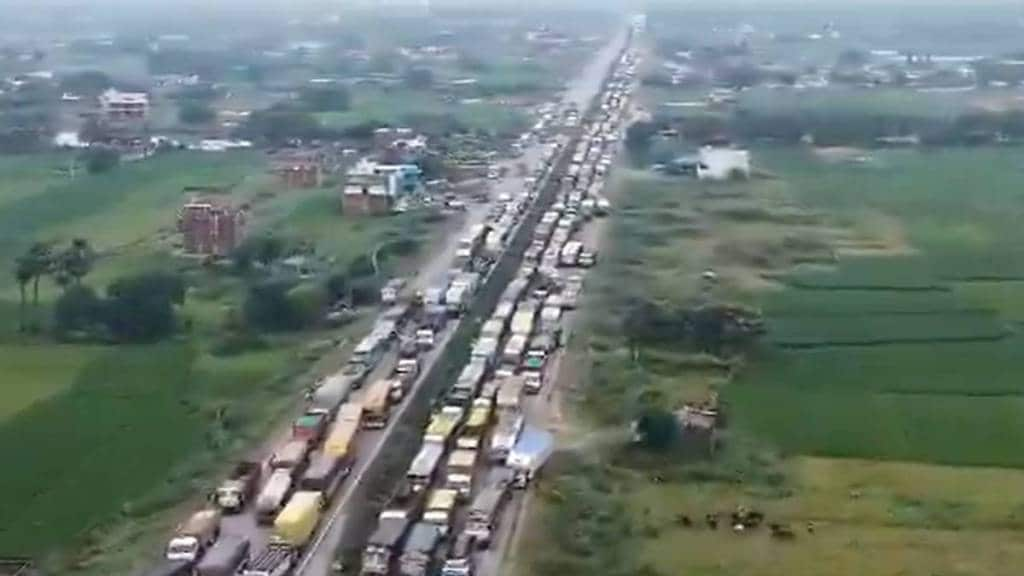Hundreds of vehicles remain stuck along a section of National Highway 19, formerly part of the (Delhi-Kolkata route) in Bihar, after heavy rains triggered flooding on service lanes and diversion paths over the past four days.
The traffic jam has not extended up to Aurangabad, almost 65 km from Rohtas and is showing no sign of easing, as per the latest reports. Large portions of the road have been waterlogged or have been turned into muddy pits, deep potholes, making progress slow and dangerous. Vehicles inch forward at a very slow pace, just 5 kilometres covered in a full 24 hours in some stretches. One truck driver told NDTV, “In the past 30 hours, we have travelled only seven kilometres. Despite paying tolls, road taxes, drivers will still face hours of traffic jams. Neither NHAI nor local administration are visible on site.” Another stranded motorist also shared a similar ordeal, “We are hungry, thirsty, even covering a few kilometres takes hours.”
No action taken by the local authorities
Despite the seriousness of the issue, neither the National Authority of India (NHAI) nor the road contractor responsible for the six-laning works has been seen taking action. When NDTV was asked, the NHAI Project Director, Ranjit Verma, refused to comment or to appear on camera.
Impact beyond just traffic
The traffic jam is not only impacting commuters and truckers, it is also impacting supply chains for perishable goods, delaying emergency and medical services. Drivers fear spoilage of the food items that have been transported amid uncertainty over how long they will remain stuck. Tourist vehicles, ambulances and pedestrians are also facing the brunt.
Heavy downpours in the Rohtas district is the reason behind the flooding of the diversion lanes and service paths. The situation highlights how the fragile infrastructure becomes vulnerable amid extreme weather conditions.
Meanwhile, torrential rain on Tuesday evening also hit traffic out of gear across Delhi and neighbouring cities, including Noida, Gurugram and Ghaziabad. Major roads were submerged, and long traffic jams were reported during peak hours.


